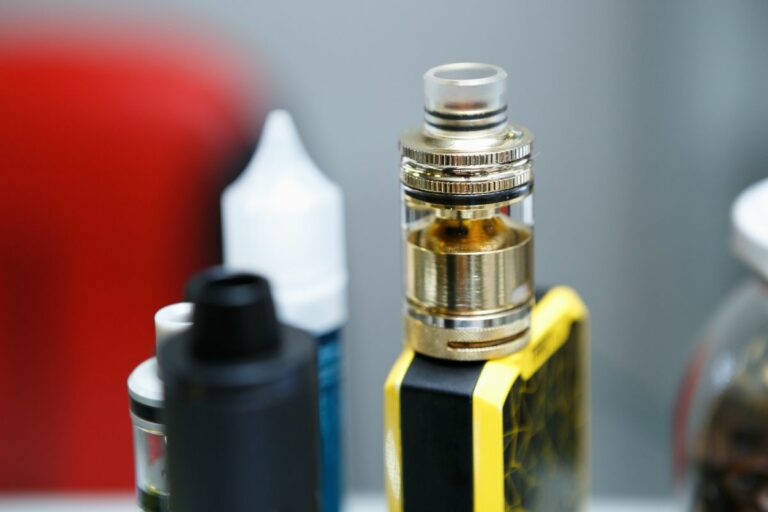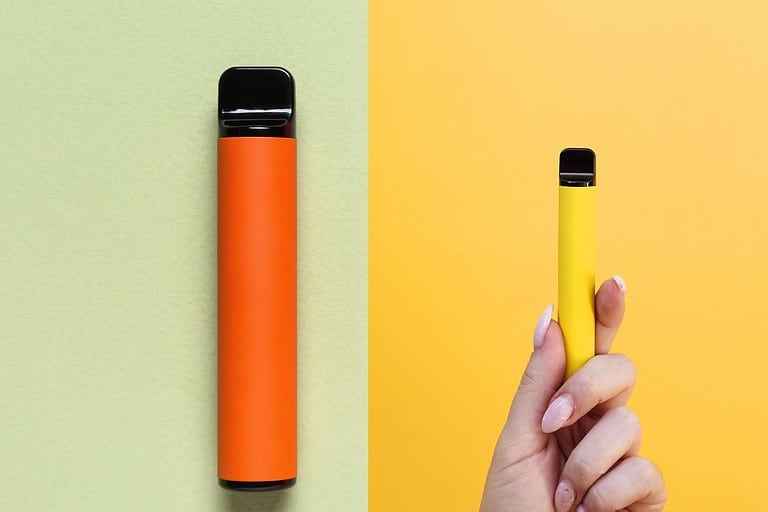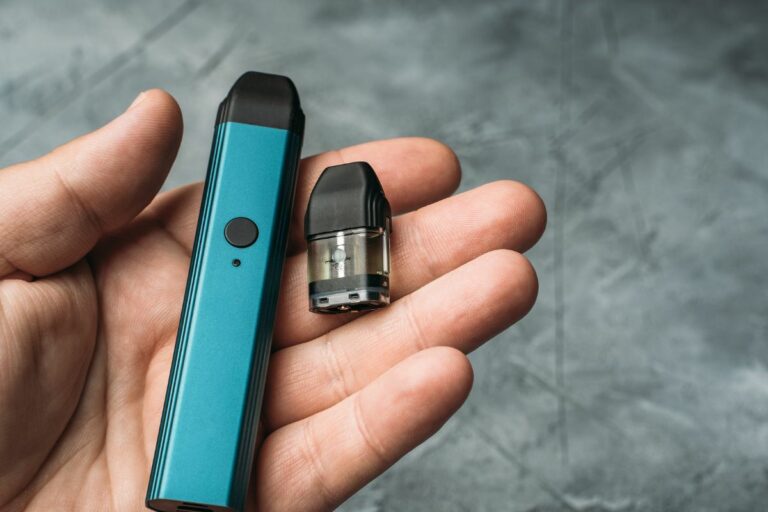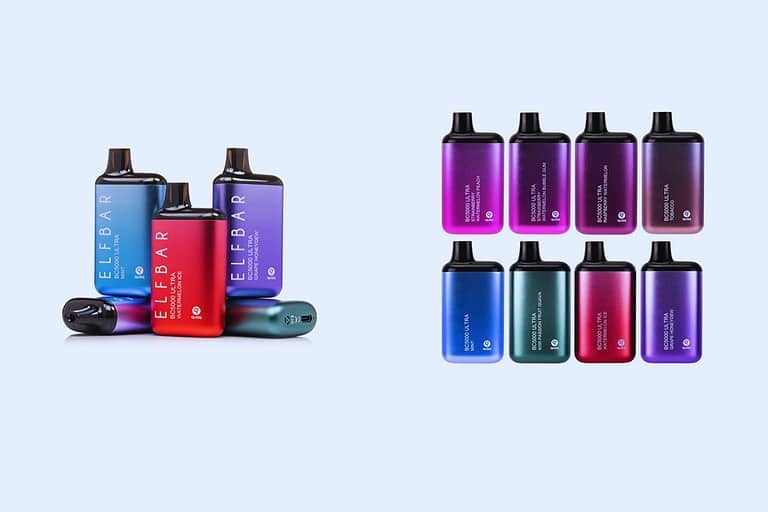Do Vapes Have Calories: The Surprising Truth Behind Vaping and Weight Gain
Vaping has become an increasingly popular alternative to smoking, as it is perceived to be less harmful and more socially acceptable. While many are aware of the potential risks associated with vaping, such as nicotine addiction and lung damage, a lesser-known aspect is the potential effect on caloric intake. This is an important consideration for people who are health-conscious, trying to lose weight, or simply curious about the impact of vaping on their nutritional habits.
Some studies have suggested a possible connection between vaping and weight loss or appetite control. The idea behind this concept is that vaping flavored e-liquids can provide the experience of tasting the flavor without consuming any actual calories, which might help in curbing cravings for high-calorie foods or snacks. However, it should be noted that using e-cigarettes to lose weight is not a proven or recommended method.
Though the relationship between vaping and caloric intake is not yet fully understood, it is essential for individuals to consider the potential health implications before adopting any weight loss strategies involving vaping. It’s crucial to focus on maintaining a balanced diet and regular exercise for achieving weight loss goals and overall well-being.
Table of Contents
Caloric Content of Vape Juice
When discussing the caloric content of vape juice, it is essential to consider the various e-liquid ingredients involved in its production. E-liquids typically contain a combination of propylene glycol (PG) and vegetable glycerin (VG) as the base, along with flavorings and optional nicotine.
E-Liquid Ingredients
Propylene Glycol and Vegetable Glycerin: These two ingredients make up the majority of e-liquid composition. Both PG and VG are widely used in various industries, including food, cosmetic, and pharmaceutical sectors. They do possess caloric content; however, it is important to note that during the vaping process, these substances are not ingested in the same manner as food. Instead, they are primarily inhaled, which means that only a minimal amount of their caloric value directly contributes to a person’s daily calorie intake.
Sugar and flavorings: E-liquids can contain various sweet and savory flavors, some of which may include sugar or similar sweeteners for taste enhancement. While sugar itself contains calories, the amounts used in e-liquid flavorings are typically minimal. Furthermore, the process of vaporization and inhalation does not necessarily lead to the absorption of these sugars in the same way as when they are consumed through food or beverages, making it unlikely that vaping significantly contributes to caloric intake.
In summary, while some ingredients in vape juice do possess caloric content, the process of vaping does not likely lead to a significant impact on a person’s daily calorie intake. The e-liquid ingredients such as propylene glycol, vegetable glycerin, and sugar, primarily serve as carriers for flavors and nicotine, rather than providing a source of caloric intake.
NEW CUSTOMER DISCOUNT
Save 15%
15% OFF YOUR ENTIRE ORDER FOR NEW CUSTOMERS USE CODE WELCOME15!
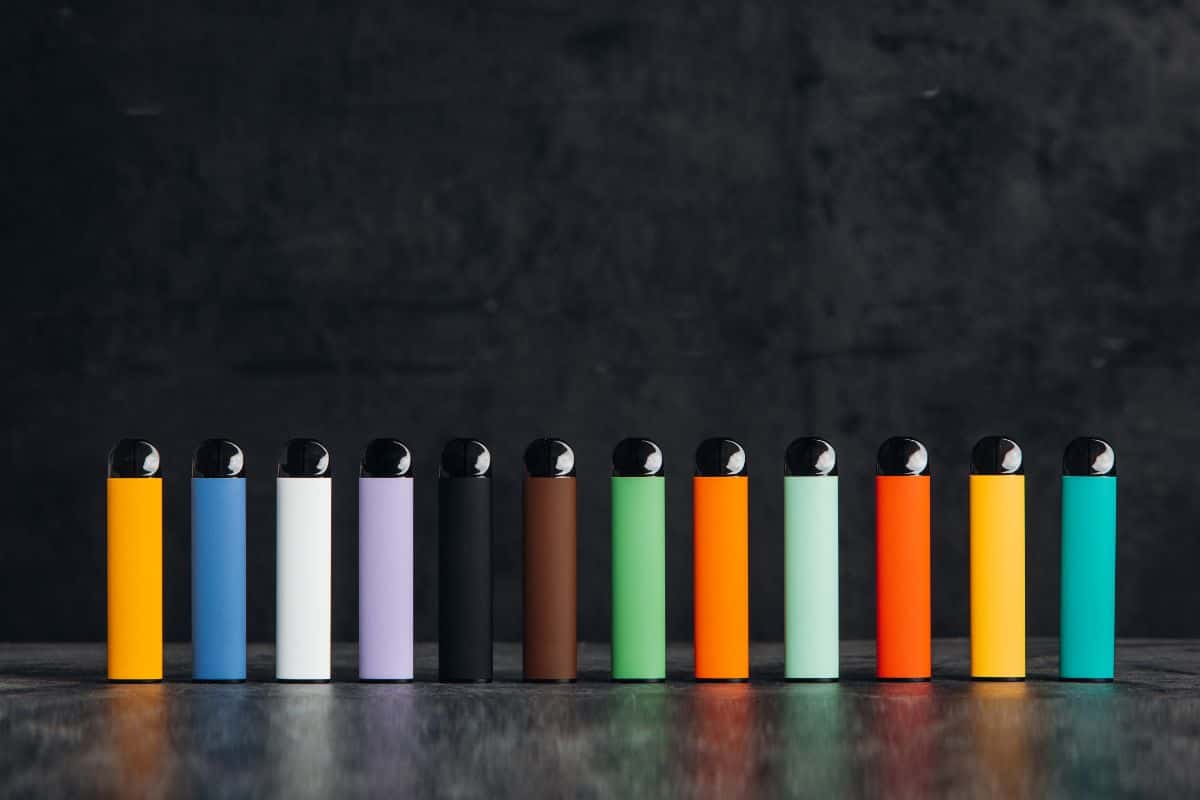
Weight and Vaping
Impact on Weight Gain and Loss
Vaping has become a popular alternative to traditional smoking; however, its impact on weight has been a topic of interest. Some people have used vaping as a tool for weight management due to its capability of suppressing appetite. In fact, this study found that some e-cigarette users use it for weight loss or control.
It is essential to note that vaping can affect both weight gain and loss in different ways. One factor to consider is the relationship between nicotine and metabolism. Nicotine, a substance found in most e-cigarettes, is known to increase metabolism rates. A faster metabolism can lead to increased energy expenditure and, in some cases, weight loss. However, this research suggests that altering metabolism may affect body weight without necessarily influencing caloric intake.
When it comes to vaping and weight gain, it is crucial to address the topic of calories. Vapes or e-cigarettes themselves do not inherently contain calories. However, some e-liquids used in vaping can contain flavorings or additives that could affect body weight. According to this source, e-cigarettes are designed to satisfy cravings and can sometimes support weight control by delivering a vapor that satisfies the desire for high-calorie foods.
In summary, vaping can have varying effects on body weight, depending on factors such as nicotine content, metabolism, and e-liquid additives. While it is not conclusive that vaping leads to significant weight gain or loss, it is essential to understand the possible impact it can have when used as a weight management strategy.
Appetite and Vaping
Nicotine as an Appetite Suppressant
Vaping has gained popularity in recent years, and some individuals have turned to e-cigarettes as a potential weight loss tool due to their appetite-suppressing qualities. The primary reason behind this lies in the nicotine, a key component of most vapes 1.
Nicotine is known to act as an appetite suppressant 2. When ingested, it affects the brain’s neurotransmitters, leading to a decrease in appetite and reduced food cravings. This can be particularly helpful for those seeking to control their caloric intake or manage cravings for high-calorie foods. However, it’s essential to note that relying solely on vaping to achieve weight loss goals may not be the healthiest option due to its addictive nature and potential side effects.
E-cigarettes come in various flavors, some of which may also help users manage cravings for high-calorie or fatty foods. According to research, flavored e-cigarettes could assist in maintaining a healthier diet and controlling food cravings.
Although nicotine can temporarily suppress appetite, it is crucial to consider the possible health risks associated with vaping. Nicotine is an addictive substance, and using it for weight loss purposes might lead to dependence on e-cigarettes. Additionally, long-term effects of vaping on appetite and energy balance are not yet fully understood3.
In summary, nicotine in vape products can act as an appetite suppressant and help manage cravings. However, relying on vaping for weight loss may have potential health risks, and it is essential to exercise caution and consider other healthier methods for weight management.
Smoke Versus Vapor
Vaping and smoking both introduce substances into the body, but there is a significant difference between smoke and vapor. Smoke is produced by burning tobacco, which creates harmful substances like tar, carbon monoxide, and many chemicals. Inhaling smoke exposes the lungs to these toxic substances, potentially leading to respiratory and health issues.
On the other hand, vapor is produced by heating a liquid called e-liquid or vape juice, without combustion. The vapor from e-cigarettes does not contain tar, and the levels of harmful chemicals are significantly lower than those found in cigarette smoke. This makes vapor less harmful to the lungs when inhaled, although it is important to note that there may still be some risks associated with vaping.
One key concern regarding the use of vapes is whether they contain calories. E-liquids are typically made from a mixture of propylene glycol, vegetable glycerin, nicotine, and flavorings. While nicotine may impact metabolism and appetite, it does not contain calories nor contribute to weight gain directly. The flavorings and other ingredients in e-liquids are also unlikely to provide any significant caloric content.
Therefore, unlike consuming food or beverages, vaping does not contribute to caloric intake. Moreover, no search result specifically mentioned that vaping has calories.
Health Effects of Vaping
Vaping has become increasingly popular as an alternative to traditional smoking, but it’s important to understand the potential health effects and risks associated with e-cigarettes. Unlike traditional cigarettes, vape devices do not involve the combustion of tobacco and therefore do not produce many of the harmful chemicals associated with smoking. However, this does not mean that vaping is risk-free.
E-cigarettes contain a liquid known as vape juice or e-liquid, which is heated and vaporized by the device. This vapor is then inhaled by the user. The primary ingredients in most vape liquids are propylene glycol, vegetable glycerin, nicotine, and flavorings1. While the absence of tobacco combustion reduces the exposure to some harmful chemicals, there are still concerns regarding the safety of inhaling these ingredients and their long-term effects.
One of the primary health concerns related to vaping is nicotine addiction. Nicotine is an addictive substance found in both traditional cigarettes and many e-liquids2. Users who become addicted to nicotine through vaping may experience withdrawal symptoms such as irritability, cravings, and difficulty focusing when they try to quit or reduce their intake.
There is also evidence that vaping may harm lung health. Some studies have shown that e-cigarette vapor can cause inflammation in the lungs and may contribute to respiratory symptoms, such as coughing and difficulty breathing3. Furthermore, vaping has been linked to a condition called e-cigarette, or vaping, product use-associated lung injury (EVALI), which can result in severe illness or even death4.
In addition to lung health, there are concerns about the effects of e-cigarette vapor on cardiovascular health. Some research suggests that vaping may increase heart rate and blood pressure, which could potentially contribute to an increased risk of heart disease5. However, more research is needed to fully understand these effects.
While some proponents of vaping argue that it can aid in weight loss by reducing cravings for high-calorie foods6, this claim is not backed by solid scientific evidence. In fact, the potential risks associated with vaping may outweigh any benefits derived from reduced calorie intake or weight loss.
Sweeteners and Flavors
When it comes to vaping, many people wonder if the flavors and sweeteners used in e-liquids have calories. To understand this, it’s important to explore the components used in making the flavored vape juice.
Vape juices, also known as e-liquids, contain four primary ingredients: vegetable glycerin (VG), propylene glycol (PG), nicotine (optional), and flavorings. The flavorings used in vape juices can be either natural or artificial, and they usually contribute to the overall taste and sweetness of the e-liquid.
Flavorings can be derived from various sources, such as natural fruit extracts or synthetic compounds. Both natural and synthetic flavorings used in e-liquids are generally considered to be very low in calories, if any. When it comes to sweeteners, many vape juices contain artificial sweeteners like sucralose, which are also low-calorie alternatives to sugar. According to research, the use of sweet proteins as a potential replacement for artificial low-calorie sweeteners has also been explored.
Disposable vapes are pre-filled, single-use devices that come in a variety of flavors. Like reusable vape devices, they also use e-liquids containing flavorings and sweeteners, and share the same considerations regarding calories.
However, it’s crucial to note that the main purpose of vaping is not to consume calories or satisfy one’s hunger. The act of vaping vaporizes the e-liquid, and the vapor is inhaled into the user’s lungs, not ingested as a food or drink. Therefore, any potential caloric content in the e-liquid is negligible and should not be a cause for concern when it comes to counting calories or managing a diet.
In conclusion, while e-liquids do contain a mixture of flavors and sweeteners, their caloric content is insignificant, if any at all. The focus of vaping should be more on the experience and the potential risks or benefits associated with it, rather than worrying about the caloric intake from the e-liquid itself.
Vaping and Dietary Considerations
The use of electronic cigarettes, or vapes, is popular among individuals who are pursuing a healthier lifestyle or trying to quit smoking. While vaping does not involve the consumption of food, some people may wonder whether it can affect their dietary efforts, especially those on specific diets or with health concerns. In this section, we will explore the impact of vaping on various dietary considerations, including the keto diet, fasting, and diabetic concerns.
Keto Diet and Vaping
The keto diet is a low-carb, high-fat diet where the body primarily uses fats for energy instead of carbohydrates. When it comes to vaping, there is no evidence to suggest that it carries any calories, as the process involves the inhalation of vaporized liquids without ingesting any actual substances. Therefore, vaping is unlikely to affect the state of ketosis or interfere with the process of fat breakdown in the body.
Fasting and Vaping
Fasting, whether for religious reasons or as part of an intermittent fasting routine, requires the individual to abstain from consuming food and beverages for a set period. In general, vaping does not provide any calories or nutrients and should not break a fast. However, it is essential to note that certain flavored e-liquids may contain artificial sweeteners, which could potentially trigger an insulin response. If maintaining strict control over your insulin response is essential during the fasting period, it may be best to avoid flavored e-liquids or opt for a nicotine-free one.
Diabetic Concerns
Individuals with diabetes often need to carefully manage their blood sugar levels to prevent complications. Although vaping does not directly contribute to caloric intake, there is a potential concern with flavored e-liquids, as they may contain artificial sweeteners, which can affect blood sugar levels. In addition, nicotine in e-cigarettes has been shown to cause insulin resistance, making it harder for diabetics to manage their blood sugar levels. To minimize these risks, diabetic individuals should consult with their healthcare provider regarding the use of e-cigarettes and consider using unflavored or nicotine-free e-liquids.
Quitting Vaping
Quitting vaping is a personal choice and can be a challenge, especially for those dependent on the nicotine in electronic cigarettes. However, with determination and the right approach, it is possible to overcome nicotine cravings and the dependence on vaping.
When quitting vaping, it is important to understand its potential impact on blood sugar levels. Nicotine, an active ingredient in e-cigarettes, may result in blood sugar fluctuations, affecting both individuals with and without diabetes. As you stop vaping, the absence of nicotine may lead to a temporary stabilization of blood sugar levels, though it varies between individuals.
Dealing with nicotine cravings is a crucial aspect of the process. There are several strategies available to help manage these cravings effectively. One method is to practice deep breathing or relaxation techniques during the initial withdrawal period, as these can help calm the mind and body. Engaging in physical activity and maintaining a balanced diet may also aid in reducing cravings and improving overall health.
As you quit vaping, it’s important to have a support network in place. Friends and family can offer encouragement and motivation, while professional support groups can provide guidance and shared experiences from others who have faced similar challenges. In some cases, your healthcare provider may recommend nicotine replacement therapy (NRT), which offers a controlled and gradual method of reducing your nicotine intake.
Keep in mind that quitting vaping may lead to withdrawal symptoms such as irritability, anxiety, and difficulty concentrating. To minimize these effects, ensure adequate sleep and practice stress-reduction activities like meditation, yoga, or simply taking a short walk in your daily routine. Additionally, staying hydrated and avoiding caffeine and alcohol can help alleviate some of these symptoms.
In summary, quitting vaping can be a challenging but achievable goal. By understanding the effects on blood sugar levels, managing nicotine cravings, and seeking support from friends, family, and professionals, you can confidently and successfully transition to a vape-free lifestyle.
Types of Vapes
Vapes come in a variety of forms and cater to different user preferences. One of the most common types is the vape pen, which is a small, pen-like device that is easy to carry and use. They are often rechargeable, which makes them a popular choice among vapers.
Another popular choice is disposable vapes. These devices are meant for single-use, and vapers can choose from various capacities, such as 2500 puffs, 5000 puffs, or even 8000 puffs, depending on their requirements. Because of their convenience and variety of flavors, disposable vapes like the Wavetec Wave 8000 are ideal for both beginners and experienced vapers.
More advanced users may opt for mods, which are customizable vape devices. These devices offer greater control over aspects such as temperature, wattage, and resistance, allowing users to fine-tune their vaping experience.
The ingredients in vape liquids, or e-liquids, can vary. Many vape liquids contain a combination of propylene glycol (PG) and vegetable glycerin (VG), which serve as the base. These substances help produce vapor when heated inside the vape device.
It is important to note that some vapes contain nicotine, while others are nicotine-free. Users can choose the nicotine levels they prefer, with options ranging from high levels for those looking to quit smoking to nicotine-free options for those who simply enjoy the experience of vaping.
In conclusion, when selecting a vape, it is essential to consider the type of device, availability of rechargeable or disposable options, nicotine content, and e-liquid ingredients such as PG and VG. This will ensure a satisfying and customized vaping experience.
Browse popular vape collections:
- Nicotine Disposables
- 2000 Puff Nicotine Disposable Vapes
- 2500 Puff Nicotine Disposable Vapes
- 5000 Puff Nicotine Disposable Vapes
- 6000 Puff Disposable Nicotine Vapes
- 7000 Puff Nicotine Disposable Vapes
- Disposable Vape Deals
- Best Vape Brands
- 8000 Puff Nicotine Disposable Vapes
- 9000 Puff Nicotine Disposable Vapes
- 5% Nicotine Disposable Vapes
- Rechargeable Nicotine Disposable Vapes
- Vape Coils
- Dab Wax Pens
- Dab Wax Pen Battery
- Yocan Vapes
- Vape Cases
Frequently Asked Questions
How many calories are in vape liquids?
Vape liquids, or e-liquids, contain a mixture of propylene glycol (PG) and vegetable glycerin (VG), which are considered non-nutritive. This means they provide no calories to the body when inhaled. The flavorings added to e-liquids have minimal caloric content, making vaping an insignificant source of calories compared to consuming food or drinks.
Does e-liquid contain sugar?
E-liquids do not typically contain sugar. Instead, they use non-nutritive sweeteners that provide a sweet taste without contributing calories. However, it is essential to read the product label to ensure no additional sugars are present, especially when using flavored e-liquids.
Can vaping affect weight loss or gain?
Vaping itself is an insufficient source of calories, so it is unlikely to significantly affect weight loss or gain. However, the act of vaping might satisfy oral cravings or mimic the sensation of eating, potentially reducing appetite and aiding in weight loss for some individuals. This effect varies from person to person.
Does nicotine usage contribute to caloric intake?
Nicotine does not contribute to caloric intake. Although it is a stimulant and can increase metabolism, the overall effect on weight and caloric balance is negligible. Nicotine may temporarily suppress appetite, but this effect should not be relied upon as a weight loss strategy.
Do disposable vapes contain sugar or carbs?
Disposable vapes contain e-liquids with the same basic composition as refillable ones: PG, VG, flavorings, and, if applicable, nicotine. They do not contain significant amounts of sugar or carbs. However, it is essential to read the label to ensure no unexpected ingredients are present.
Will vaping impact intermittent fasting?
Vaping should not impact intermittent fasting, as it does not provide the body with calories or nutrients to break the fast. However, consuming nicotine-containing e-liquids may cause a mild stimulant effect, which could affect hunger levels. It’s crucial to consult with your healthcare provider or a fasting expert to ensure vaping aligns with your specific fasting plan.
Footnotes
- https://rebenly.com/does-vaping-make-you-lose-weight/ ↩ ↩2
- https://www.ingentaconnect.com/content/aips/trs/2016/00000002/00000004/art00006 ↩ ↩2
- https://search.proquest.com/openview/8cd58b25840f886434137d7759ef6b0c/1?pq-origsite=gscholar&cbl=18750 ↩ ↩2
- EVALI and Vaping-Related Illness ↩
- Cardiovascular Effects of E-Cigarettes ↩
- Adult E-Cigarette Use for Weight Loss or Control ↩


